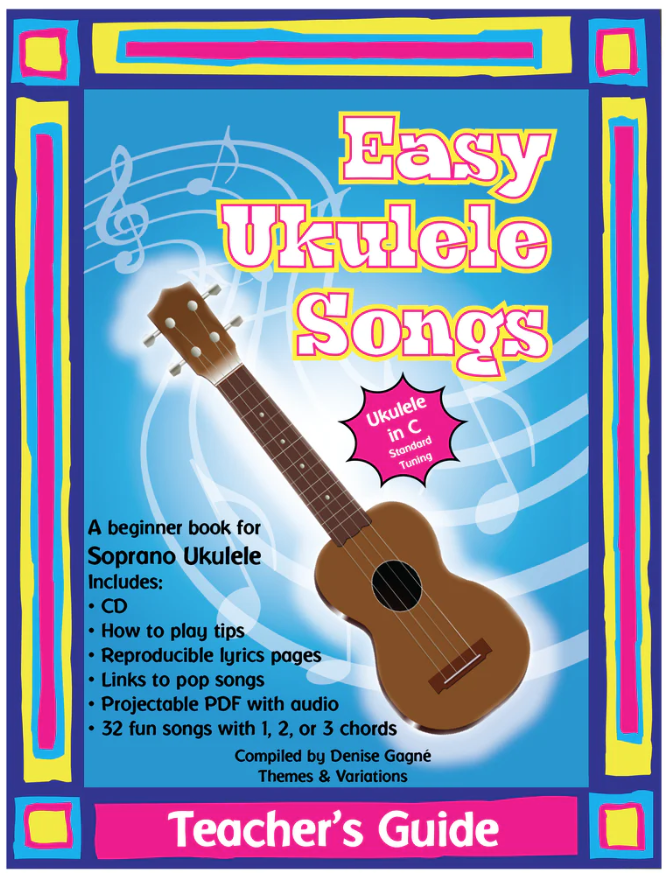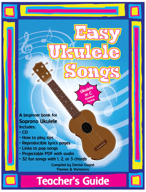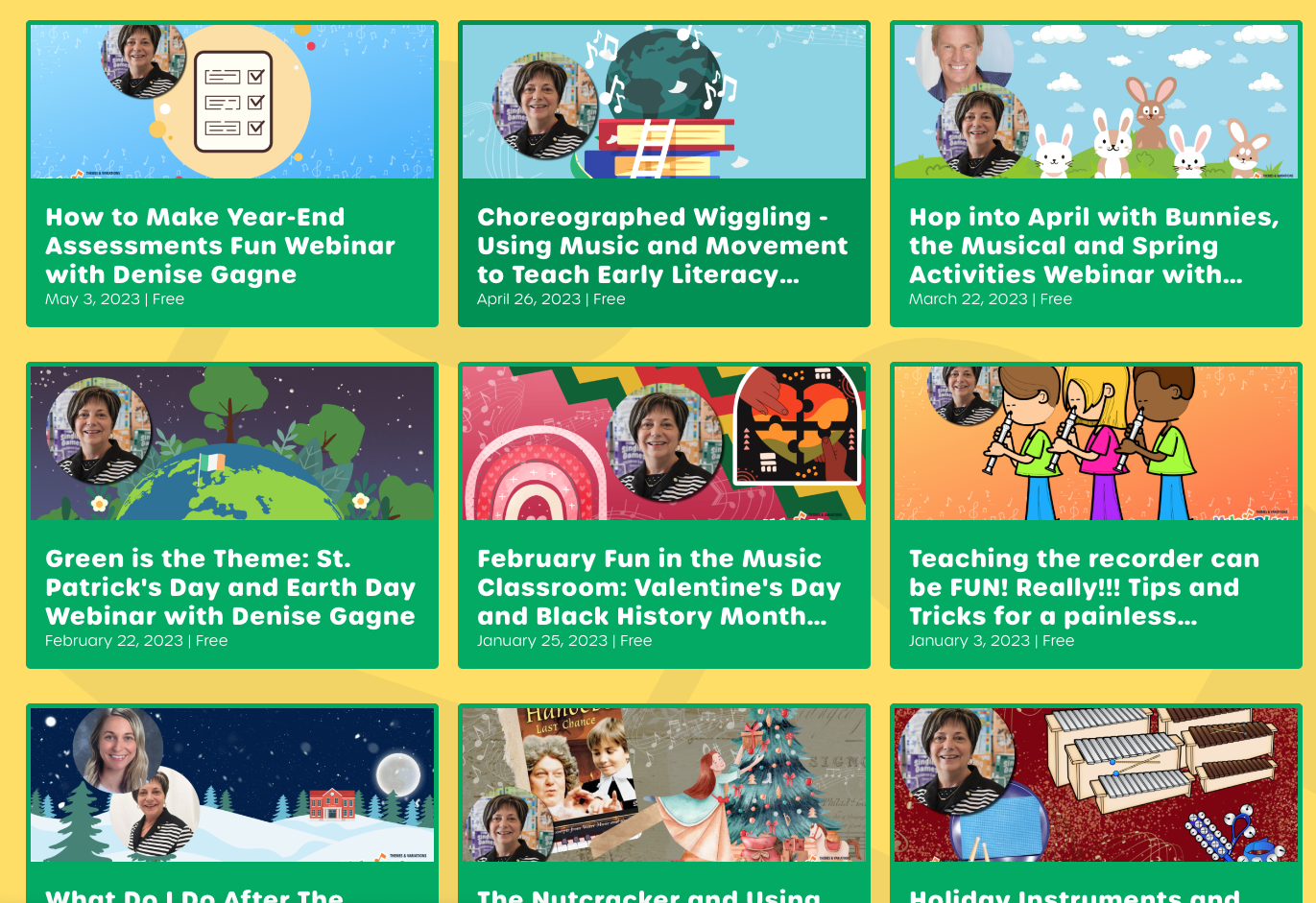Ukulele Tips and Tricks

Ukuleles are back - and they're better than ever! Teaching ukulele can be a ton of fun for you and the students. Why ukulele? (instead of guitar)
* ukes are smaller than guitar, and with only 4 strings, a little easier for a beginner
* it's less expensive to buy a class set of ukes than a class set of guitars (and easier to store)
What size ukuleles should I buy?:
Soprano ukuleles are a little less expensive than concert sized, but concert sized have a nicer sound, and are a little easier to play for Grade 5 students who have big hands. If you are thinking about baritone ukuleles, you may as well go with 3/4 sized guitars. So - my recommendation is to go with Concert Size.
What Brand?:
Buy the best quality ukulele that your school budget will allow. Avoid the small brightly coloured ukuleles. They will not stay in tune.
C Tuning or D Tuning
C tuning is the standard tuning for ukulele. If you go to a music store and buy a ukulele book, it will be in C tuning. If you want to play along with a song on YouTube it will be in C tuning. If you want to perform with recorders or Orff instruments, they all use C tuning.
There is a tradition in Canada, started by Chalmers-Doane that encourages the use of D tuning. One of the reasons for tuning ukulele in D is that children will sing in a higher pitch when they play the D chord. This reasoning doesn’t make sense. If you want to change the key of the song, change the chord - not the tuning of the entire instrument. If you use D tuning, your students won’t be able to use any resources outside of your classroom, and it will be much more difficult to teach them to read melodies with a bazzillion sharps than to teach them to read in the key of C. Some districts mandate D tuning, but if you are given the choice, I strongly recommend using C tuning.
Tune for the Students, or Teach them to Tune?
I found it faster and easier to tune the ukuleles for my students. I had them line up with instruments in hand, and I would tune each one. There is a ukulele tuner at www.musicplayonline.com. When you click on a peg, it plays that note until you click the peg again. The C tuning is G C E A. I click on the G, tune the G string, then tune all the other strings by ear. I don’t use an electronic tuner, because it’s faster to do it by ear.
Quiet Practice:
I do need the students to be silent while I’m tuning. The first student in line would get the ukulele tuned, and then go to the board to be a “monitor.” He/she would write down the names of any students in the line who were making noise. Those students would have to come in at recess for “silent practice.” I’d set a timer for 60 seconds, and they had to remain silent for that time. If they made noise, the timer started again. Usually one recess of “silent practice” was all that was needed for the students to be respectful of the need for quiet when tuning.
There are clip-on electric tuners available now that would make it possible for students to tune their own instruments. If you have 30 minute classes, I’d tune the ukes yourself. If you have 50 minute classes, you have enough time to teach the students how to use the tuners.
Teach Chording, Note Reading or Both?
I suggest that start with teaching chords.

In Easy Ukulele Songs, I have 15 one chord songs. Students will really enjoy playing actual songs, and giving them one chord songs eliminates at the beginning, one of the big issues that they’ll have - changing chords.
You can purchase the book here!
Easy Ukulele Songs comes with projectable of the songs - both lyrics and notation - with the audio embedded in the PDF. We have formatted the projectable to fit the screen - the music is big and easy to read. Few publishers include interactive projectables - it makes your job much, much easier!
In the Easy Ukulele Songs projectable PDF, there are also links (embedded, so you click on the link and go right to the site) to pop songs on YouTube, and the easiest of these uses only one chord. Teaching some pop songs holds a lot of appeal for fifth and sixth graders. I really like teaching ukulele (or guitar) at the beginning of the school year. The kids are much less reticent about singing when they have a ukulele or guitar in their hands, and I’ve found that the willingness and enjoyment of singing then continues through the rest of the school year. I had a rule - “No sing - no play” and took away instruments if kids refused to sing. If you’re teaching a combination of folk and pop songs, kids are a lot easier to convince to sing.
Help! My students can’t change chords!
In Easy Ukulele Songs, the first two chord songs use F and C. (or C7). This is a fairly simple chord change but some students will find it challenging.
Begin working on changing chords by having the students the F chord for 8 beats, pause for 8 beats, and then play the C (or C7) chord for 8 beats. (The C7 chord is easier). When they can manage this, play each chord for 4 beats and pause for 4 beats. Eventually, you can eliminate the pause.
Even with lots of practice, there will be some children who can’t change the chords. I divide the class into two groups, and assign one group the C chord and the other group the F chord. I make up signs that say “F” and “C” and hold up the sign so the group knows when it is supposed to play. There are usually a few children who are able to change, and I have them sit in the middle and they play both chords.
Differentiating in Ukulele Classes
If you have special needs children in your music classes, consider downloading a Ukulele app, so they can push a button and “strum” along with the students on actual ukes. Another way to differentiate, is when you’re playing songs with a C chord, tune the ukes to G C E G. (instead of G C E A). This is an open tuning C chord. Put your special needs children in the C chord group and they can play the ukulele without putting any fingers on.
Musicplay Workshops
Registration for Musicplay Live in Washington, DC; Austin, TX; and Virtual is open!
Check out our collection of FREE webinars here!

Musicplay Minutes Podcast

Listen to our newest podcast on ideas for St. Patrick's Day and Earth Day!

.png?width=483&height=405&name=MusicplayLive%202023%20Sing!%20Say!%20Dance!%20Play!%20With%20Artie%2c%20Denise%2c%20and%20JJ%20Locations%20FB%20(2).png)